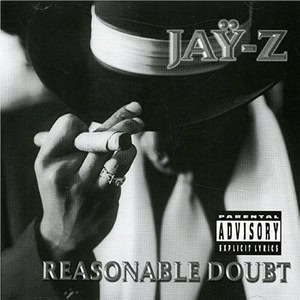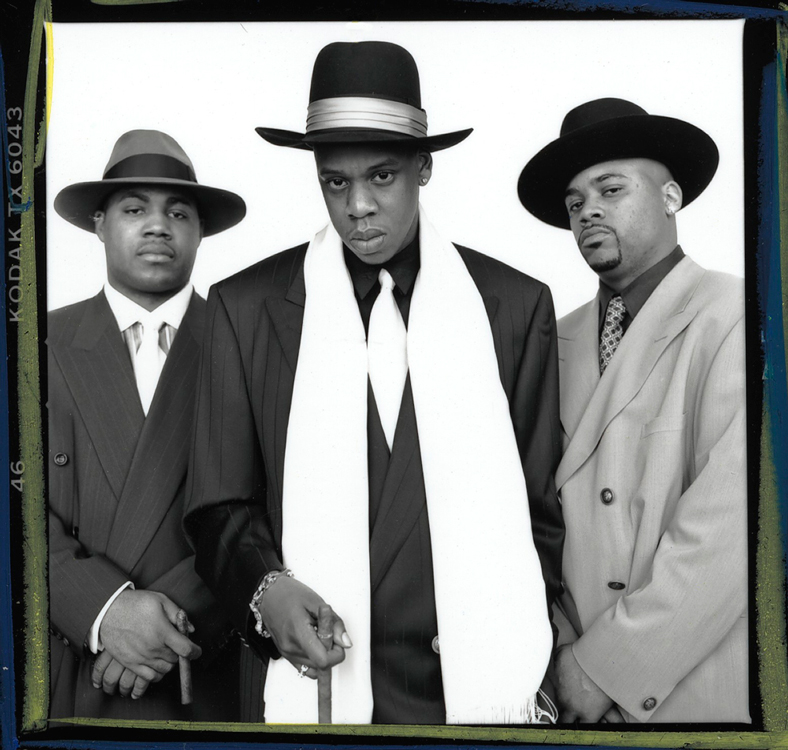The introduction of JAY Z to the world occurred when his debut album Reasonable Doubt was released on Roc-A-Fella Records on June 25, 1996.
With hits such as “Can’t Knock The Hustle” featuring Mary J. Blige, “Brooklyn’s Finest” featuring the late Notorious B.I.G and “Dead Presidents,” he peaked at the number three spot on Billboard’s Top R&B/Hip Hop Albums chart.
Jonathan Mannion, the photographer behind the lens to capture the album’s iconic cover, is currently celebrating his epic contribution to the album’s 20-year anniversary, with a private event held today [Thursday, June 30] titled “Prophecy,” presented by Mannion and Roc Nation. The event will feature “22 historical images that bring back iconic moments in time where two future icons in their respective fields would intersect and cause quite a stir.”
TheSource.com: What events occurred that were essential in getting your big break in the photography world back in the 90s?
Jonathan Mannion: The biggest break I’ve received was as a 22 year old. I had the opportunity to work for the legendary Richard Avedon as my first job straight out of Kenyon College. This opportunity afforded me the ability to see the biggest jobs that were being done in the world at the time: Pirelli Calendars, Versace campaigns, etc. This provided me with a foundation of how the photography business worked as well as the ability to see a master photographer create. I also worked for other brilliant photographers such as Michael Halsband, Ben Watts and Steven Klein, who all contributed to perfecting my skills. The technical ability that I gained there coupled with my passion for Hip Hop allowed me to transition into album covers, the first of which was JAY Z’s Reasonable Doubt, a classic album in everyone’s book.
What’s the story behind getting that opportunity?
The opportunity to shoot this album came about because of a dear friend, KB Payne, who worked in the press department of Roc-A-Fella as Jay was about to drop the album in ’96. She set up ameeting where I was able to articulate my vision for the project to Jay and then negotiate the rate for the session with Damon Dash. This was my first opportunity to spread my wings and showcase my talents on a massive scale. Entering the “arena” of Hip Hop with one of the most impactful records of all time allowed my stock to rise quickly. After this delivery, it was all about consistency. I would over the next 20 years receive the distinct privilege of helping to define and shape how we view some of the most important artists that have defined culture: Eminem, Kanye West, Jay, DMX, OutKast, just to name a few.
Was the iconic fashion and portrait photographer Richard Avedon your mentor during the time that you worked on the photography of the album?
I only worked with Avedon for one year (1993-1994); this was my commitment. During that period with his whole team, I helped him on set, I helped him with the creation of two books and helped him hang his retrospective at the Whitney. It was the opportunity of a lifetime which built my confidence as a shooter. Specifically in ’96 I was working with Ben Watts, who was the last person I assisted before taking the leap to become a professional photographer. Avedon remains a constant source of inspiration to me and I’m blessed to have witnessed his greatness, genius and generosity.
During that particular shoot, what were you trying to convey to the onlooker when it came to JAY Z’s persona?
Originally this album was called Heir To The Throne and I presented a set of ideas that would have been perfect for the project. Upon further consideration, Jay changed the title to Reasonable Doubt because he felt that the people should discover him and decide whether he was the heir apparent. Creatively, I presented an idea with supporting references that showcased a distinct moment in time from 1914-1918 where we gained a perspective on style and its lasting ability. We decided to go very classic with the attire, taking a page out of the mob bosses in New York at the time. They were always impeccably dressed while still conducting business on their terms. It was a beautiful parallel to draw between Roc-A-Fella and this underworld. It was important to claim New York / Brooklyn to plant his feet firmly as the next to carry the torch for the East. We presented a full range of emotions, each of which showed the depth of his character and his confident, if not untouchable, demeanor. He was brilliant in this moment, so very focused on delivering a complete album with purpose and authenticity.
Did you ever think the cover would be considered a timeless piece of art?
After the session was completed, I knew I had achieved my vision completely. The images were timeless and real, true to the moment and their individual characteristics. The cover remains one of my favorites, if not the favorite cover I’ve achieved. I knew we landed something a little different than the other visuals that were happening at the moment.
How does it feel to have your work play a vital role in Hip Hop history, especially after capturing moments in time such as JAY Z’s staple album?
I think it’s a responsibility we have as photographers to pour our soul into our work, to tell rich and authentic stories to the audience in order for them to understand a little more about the artist and to push the boundaries of what to expect from the culture. I’m thrilled to say that I’ve been doing just that for the last 20 years. My classic approach to taking the photos not only fulfills my creative need to honor the photographic tradition, but also reveals visuals that began to tell a rich story of the individual. I’m beyond privileged to do what I love within the arena of Hip Hop, to create timeless images that have left an imprint that has been felt globally. It’s an honor to be one of the most trusted eyes within the industry.


